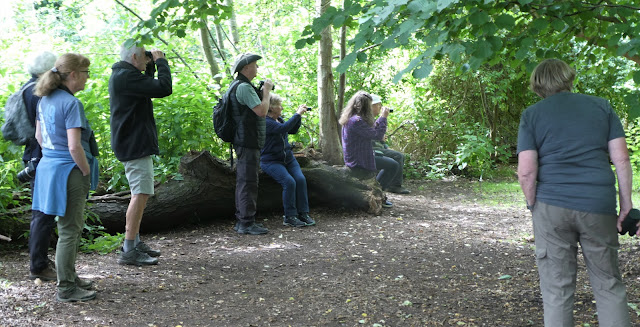2nd July 2022 - Nine ANW members joined our interesting and informative trip to Suffolk Wildlife Trust's Lackford Lakes Nature Reserve in Suffolk. The reserve mainly comprises a number of old flooded gravel workings, but apart from the obvious lakes, has a rich variety of habitats including reedbed, boggy scrub, meadow, woodland, which attract an equally good variety of wildlife.
From the many good hides and paths we saw a total of 40 bird species, several with young, 9 butterfly species and 6 species of dragonfly and damselfly, as well as a few interesting mammals and flowers.
Watching Nuthatch, Marsh Tit and Bank Vole, amongst others by 'the log' [photo David F]
Nuthatch [photo Esme L]
Marsh Tit [photo Andy M]
Great Tit [photo Esme L]
Bank Vole [photo Andy M]
Pheasant [photo Andy M]
Adult male Common Blue Damselfly [photo Esme L]
Immature male Blue-tailed Damselfly
- the green colour on thorax turns to blue as the male matures into an adult [photo Esme L]
Adult male Banded Demoiselle [photo Andy M]
Male Four-spotted Chaser [photo Esme L]
Male Four-spotted Chaser
[photo Andy M]Male Four-spotted Chaser
[photo Andy M]Male Black-tailed Skimmer [photo Andy M]
Little Grebe with young [photo Andy M]
Little Grebe feeding young [photo Andy M]

Female Mallard with young [photo Andy M]
Speckled Wood [photo Esme L]
Comma [photo Andy M]
Gatekeeper - the pale patterning and uneven row of small white dots
on the hind underwing are diagnostic [photo Andy M]
Female Meadow Brown
- showing much less orange than the Gatekeeper [photo Andy M]
Large Skipper [photo Andy M]






















No comments:
Post a Comment